Pooling arrangement should solve NATO’s strategic airlift gap. The Dutch Armed Force’s (DAF) recent deployment of the 1 (NLD/AUS) Task Force Uruzgan (TFU) to Southern Afghanistan – as part of the expanding NATO-led International Security Assistance Force (ISAF) – highlighted its lack of strategic lift capacity. Instead they relied so-far upon chartered airlift to deliver the bulk of their equipment to the theatre of operations.
Beside Ukranian Antonov An-124 freight aircraft, the Dutch also chartered C-17 aircraft from the US Air Force (for example to transport the 55 tons PzH-2000NL 155mm Self-Propelled Howitzer to Kandahar, Afghanistan), however it is unlikely that the Netherlands would be able to have guaranteed access to these C-17s whenever the need arose, given the present shortfall in strategic airlift capacity of the USAF.
In addition to chartered strategic airlift, the Dutch have made use of strategic sealift to deploy to Afghanistan. Althoug, much cheaper than rented airlift and having a greater carrying capacity, the drawback of strategic sealift vessels is that they require weeks to deliver their payload to the area of operations, as opposed to the days or even hours required by strategic airlifters. Therefore sealift is not ideal for operations requiring rapid deployment.
Marine Corps General James Jones, NATO Supreme Allied Commander Europe, said earlier this year: “the alliance needs strategic lift because we do not have the ability to project large cargo, like armoured vehicles in a combat ready configuration or helicopters, to distant theatres. We have a lot of C-130s in the alliance but (they) are aircraft you use once you get to Afghanistan. Tactical airlift is different in that it is the lifeline of deployed forces, transporting equipment, troops and supplies to, within and from a theatre of operations. The C-130 Hercules aircraft provides tactical airlift on a daily basis, without which the ISAF mission in Southern Afghanistan can not be sustained. We need a strategic lift vehicle such as the C-17 that can take us rapidly on large scale from Europe to Afghanistan.” This capability is deemed crucial for operations to be performed by the alliance.
The Royal Netherlands Air Force (RNLAF) presently possess some strategic airlift capacity in a fleet of two KDC-10-30CF strategic air-to-air refuelling jets and one DC-10-30CF cargo/passenger jet, which have the capability of travelling long distances without refuelling. However, these aircraft are limited as strategic transporters by their inability to transport outsize equipment and a lack of defensive tools, which makes them easy targets in volatile areas. Besides that the DC-10 cargo jet is in conversion at the moment and comes operational in 2007. By only transporting cargo the KDC-10 has a maximum cargo-load of 65 tons or when its used in a combination of 165 passengers and the other half cargo it can carries 32 tons of cargo. Usually the RNLAF use the latter option. Soon the RNLAF transport fleet will be expanded with a fourth DC-10 cargo jet. Additionally the four Fokker 60UTA-N transports, including the two used for maritime patrol in the Antilles, will be sold and will be replaced by two second hand (formerly stored US Navy EC-130Q aircraft) C-130H Hercules aircraft to be added to the already two C-130s in service.
However, the need for the NATO alliance forces to be able to deploy themselves over distances spanning thousands of kilometres, requires more modern transport aircraft. Strategic airlift has been one of the long-standing shortfalls in European capabilities. To strengthen this kind of mobility 13 NATO members are currently exploring how to acquire strategic airlift capacity, both unilaterally and in collaboration with allies, focussed on improving capacity for more rapid deployment.
An interim option for obtaining strategic airlift capability is the recently finalized strategic airlift interim solution (SALIS). Earlier this year, a consortium of 16 NATO and European Union countries finalized a charter arrangement with Russia and the Ukraine that grants the alliance access to six ultra-heavy Antonov An-124-100 Ukranian-made freight aircraft with a maximum capacity of roughly 125 tons of equipment and/or cargo. Although, the An-124 is somehow a problematic choice. Its limitations are its range, it is not NATO-certified to carry passengers, non-pressurized cargo hold and the sheer size of the aircraft prohibits its to land on short and/or damaged airstrips like the ones in Kandahar or Tarin Kowt in Afghanistan. Moreover, the SALIS contract restricts the during the Soviet regime built aircraft only for use in an environment that does not require defensive aid equipped cargo aircraft.
On 12 September 2006, the Dutch Ministry of Defence (MoD) has announced that the Netherlands, together with 12 other alliance countries, signed a letter of intent (LOI) to launch contract negotiations for the collective purchase of at least three or four Boeing C-17A Globemaster III long-range cargo jets. And thus far they include: Bulgaria, the Czech Republic, Denmark, Estonia, Italy, Latvia, Lithuania, the Netherlands, Poland, Romania, Slovakia, Slovenia and the United States. Although membership in the airlift fleet remains open to other nations, and some additional nations are considering joining.
Under the newly announced plan, each participating nation will agree to pay for a portion of an aircraft rather than an entire aircraft. The 13 nations plan to form a strategic airlift capability (SAC) unit as NATO pooled assets with multinational crews n the same fashion as the NATO E-3 Sentry AWACS aircraft, stationed in Geilenkirchen, Germany. The SAC unit will probably be based at Ramstein Air Base, Germany, which is also the hub of U.S. airlift operations in Europe. Housing the aircraft at this U.S.-run facility, will significantly reducing maintenance and ownership costs. Participating countries will receive allocated flight hours relative to their participation. The Dutch MoD says they expect 500 flight hours per year for EUR 10-15 million per year over the next 30 years.
The 13 nations will fly the C-17s based on sovereign national requirements, while these national requirements will often be related to NATO operations. They may also be exclusively of a national character, or for United Nations, European Union or international purposes such as humanitarian airlift and disaster relief. Because of the urgent operational need for strategic airlift, the SAC nations intend to conclude contract negotiations this year, and have the goal of receiving the first C-17 by the middle or end of next year and additional planes are called for to be delivered every six months, reaching an initial operating capability by the end of 2007 and full operating capability in 2009.
The C-17 heavy transport aircraft is by all accounts the best long-range military transport in service today. Its design is intended to allow delivery of passengers and/or 77 tons of outsize combat cargo and equipment directly into austere airfields. The C-17 can carry virtually all of the Army’s air-transportable, outsized combat equipment. It is also able to airdrop paratroopers. With a maximum gross takeoff weight of 265 tons it can take off from a 2,280 meters long airfield, fly 4,450 kilometres, refuel while in flight and land in 900 meters or less and as narrow as 27 meters wide unpaved or paved airstrips in day or night.
The USAF C-17s are the backbone of U.S. Air Mobility Command inter-theatre transport around the world. With a 90% mission-capable rate, it is cheap to operate and the plane is so popular with military users that it is being used at a rate 40% higher than expected. Basically, every C-17 that is available is in use everyday, delivering supplies to troops in Afghanistan, providing humanitarian relief to refugees, evacuating wounded soldiers from Iraq. The latter is one reason why the time it takes to get wounded U.S. GI’s from the war zone to U.S. stateside hospitals has declined from ten days in the first Gulf War to three days today.
Apart from 180 budgeted C-17s of the USAF, the British Royal Air Force also flies four C-17s. The British MoD announced on 4 August 2006 that they had ordered a fifth C-17, due to be delivered in 2008. The four current aircraft on lease will be purchased at the end of the current contract in 2008. The Royal Australian Air Force announced on 2 March 2006, that they were purchasing three C-17 aircraft, plus an option for a fourth one, with the first C-17 slated for delivery in November 2006 and continuing through February 2008. Also Canada announced that it would like to acquire four C-17s. On 9 September 2006, Boeing said they would likely secured both the equipment and maintenance contract, largely because no other company can meet the Canadian contract requirement. The first C-17s could be delivered by the end of 2008. The Canadian Department of National Defence is expected to make an official announcement in Spring 2007.
The inauguration of a SAC pool will fill a gaping hole in Europe’s complete lack of heavy airlift. At the same time it will provide more business for Boeing. The timing is important because, Boeing is on the cusp of shutting down its C-17 production-line. Once production halts, restarting the line significantly would increase the price of individual C-17 aircraft, which currently cost approximately $200 million apiece. C-17A production is currently slated to end in 2009 unless Boeing receives follow-on orders.
On 21 September 2006, a U.S. House and Senate conference committee approved a defence bill for 2007, for 10 additional C-17s, which is seven more planes than either chamber originally approved. If such an order is placed, Boeing would consider to begin C-17B production in 2010. The proposed C-17B would be capable of landing on sandy beaches and other areas currently off-limits to the C-17A.
The forming of this SAC pool is a work in progress. NATO needs the planes, but will it be able to overcome its historical difficulty with group purchases. The last time NATO purchased something jointly was somewhere in the seventies. And… the track record of them getting their budgetary acts together is not promising. But when they will, most probably this pool will expand with another future strategic airlift option for NATO countries as additional aircraft roll off of future active production lines. Most probably that will be A400Ms from the European Airbus consortium, which is developing this transport aircraft. Even though, its believed to be a highly capable plane when it enters production with a purchase price of approximately $90 million each, the A400M is a smaller propeller-driven aircraft with a payload of 37 tons. Although considered primarily a tactical airlifter, the A400M is capable of transporting outsize equipment over long distances. The A400M is also ideal for landing on short or dilapidated runways.
Germany, France, Spain, the United Kingdom, Turkey, Belgium and Luxembourg have their hopes pinned on the success of the Airbus A400M and are committed to acquiring a total of 180 of the Airbus aircraft. However, the airbus has not yet been operationally tested and will not make its first flight until the end of the decade. With its availability for purchase after 2010 the A400M will not be available in sufficient numbers until 2012 or later. But what is most important of this pooling concept, can we actually solve the strategic lift problem or make significant progress in the strategic lift problem. Because now it is proven that with Afghanistan, with Congo, with Darfur, with Pakistan, if you can not get there, you can not go.



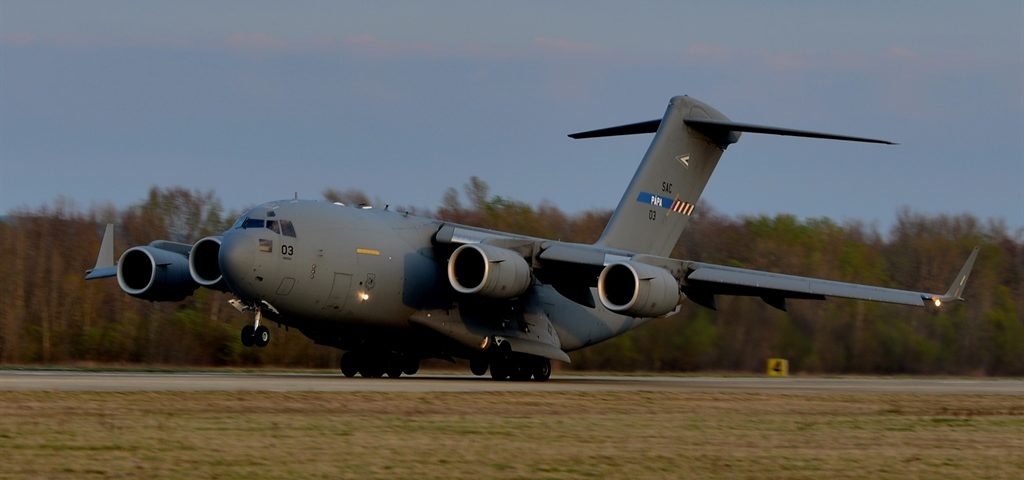

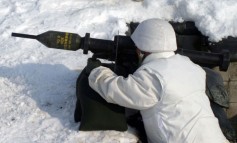
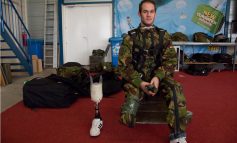
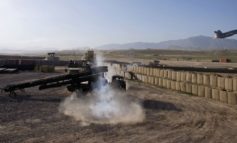
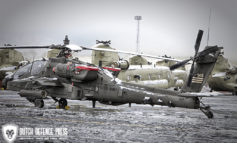
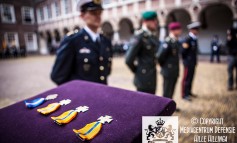



Leave a Reply